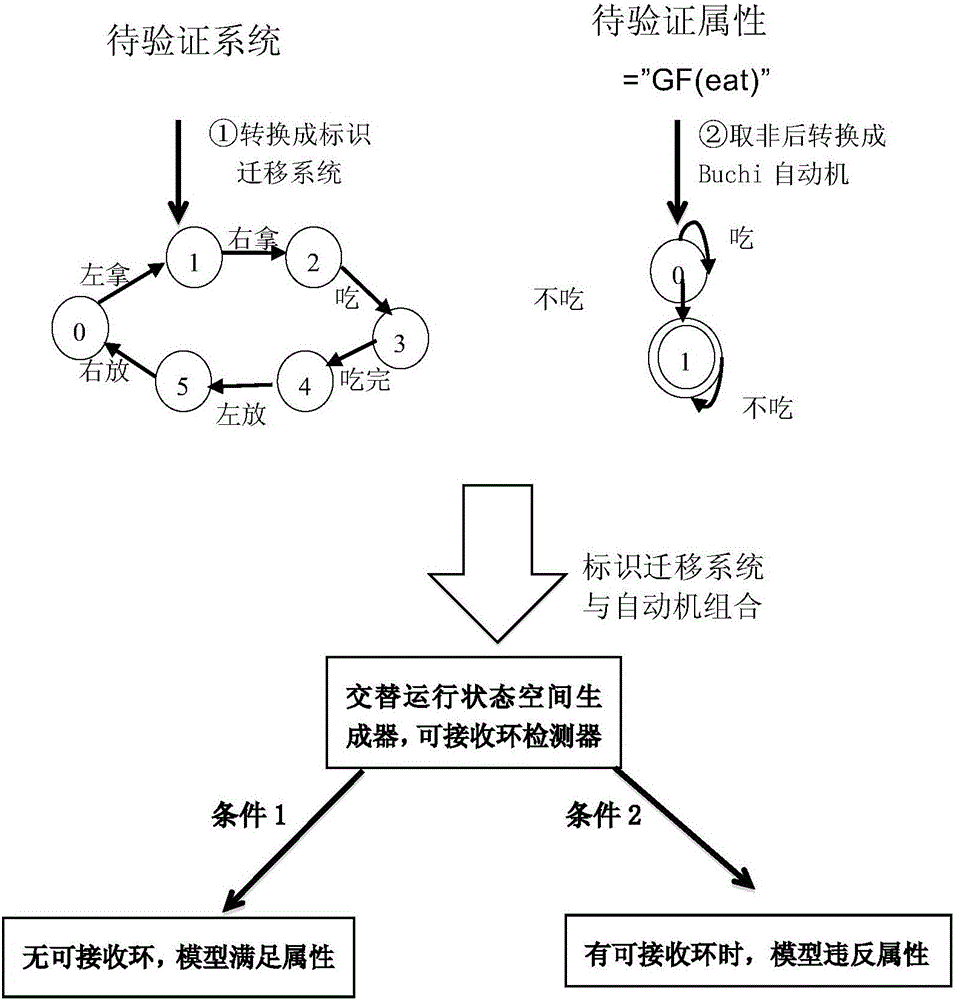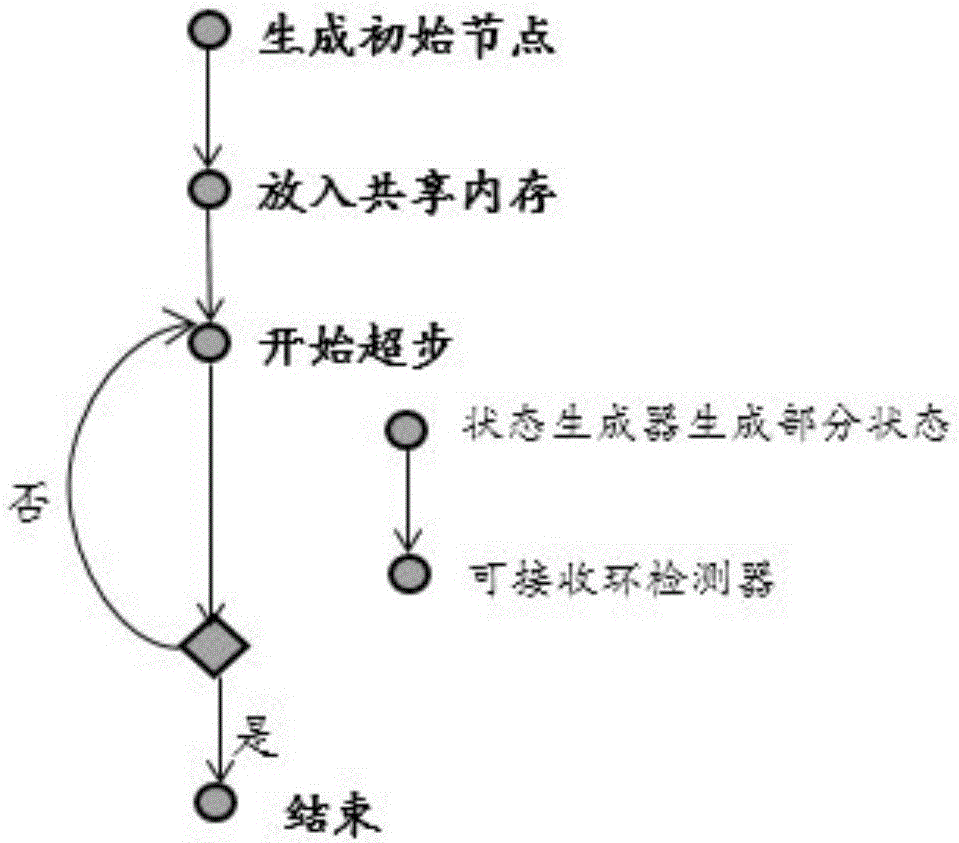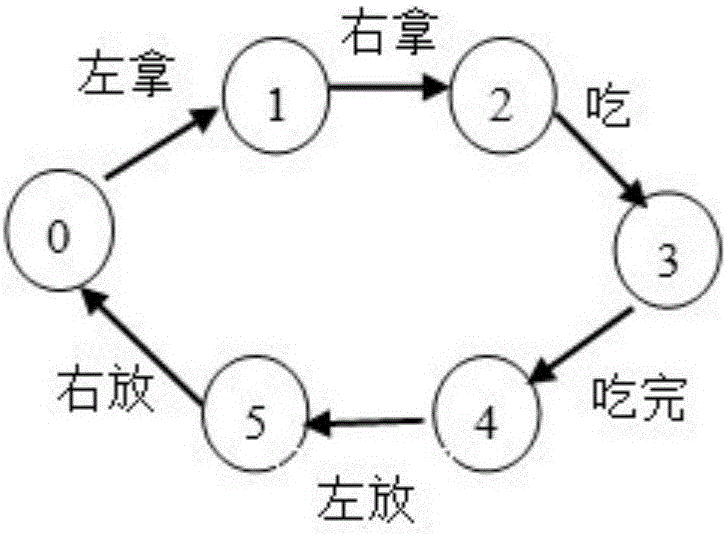Single-machine multi-core parallel model checking method with high performance
A model checking, high-performance technology, applied in error detection/correction, software testing/debugging, instrumentation, etc., can solve the problems of high segmentation overhead and low performance, achieve high performance, good scalability, and improve synchronization overhead performance effect
- Summary
- Abstract
- Description
- Claims
- Application Information
AI Technical Summary
Problems solved by technology
Method used
Image
Examples
Embodiment Construction
[0090] In order to enable those skilled in the art to better understand the present invention, specific examples are given below to further describe the present invention in detail.
[0091] This example verifies the classic verification model in the field of model checking, the philosopher's eating problem. The problem of eating philosophers is that there are a total of several (model parameters) philosophers at a table. Each of these philosophers has a chopstick between them. They can pick up the left and right chopsticks, but only when they pick up two chopsticks at the same time, After eating, put down the left and right chopsticks in turn. The behavior of each philosopher is modeled as an identity transfer system, such as image 3 shown.
[0092] In this example, a series of attributes will be verified for several philosophers. The specific verification questions and attributes are shown in Table 1. Through this patent method, through the interface of the open source s...
PUM
 Login to View More
Login to View More Abstract
Description
Claims
Application Information
 Login to View More
Login to View More - R&D
- Intellectual Property
- Life Sciences
- Materials
- Tech Scout
- Unparalleled Data Quality
- Higher Quality Content
- 60% Fewer Hallucinations
Browse by: Latest US Patents, China's latest patents, Technical Efficacy Thesaurus, Application Domain, Technology Topic, Popular Technical Reports.
© 2025 PatSnap. All rights reserved.Legal|Privacy policy|Modern Slavery Act Transparency Statement|Sitemap|About US| Contact US: help@patsnap.com



